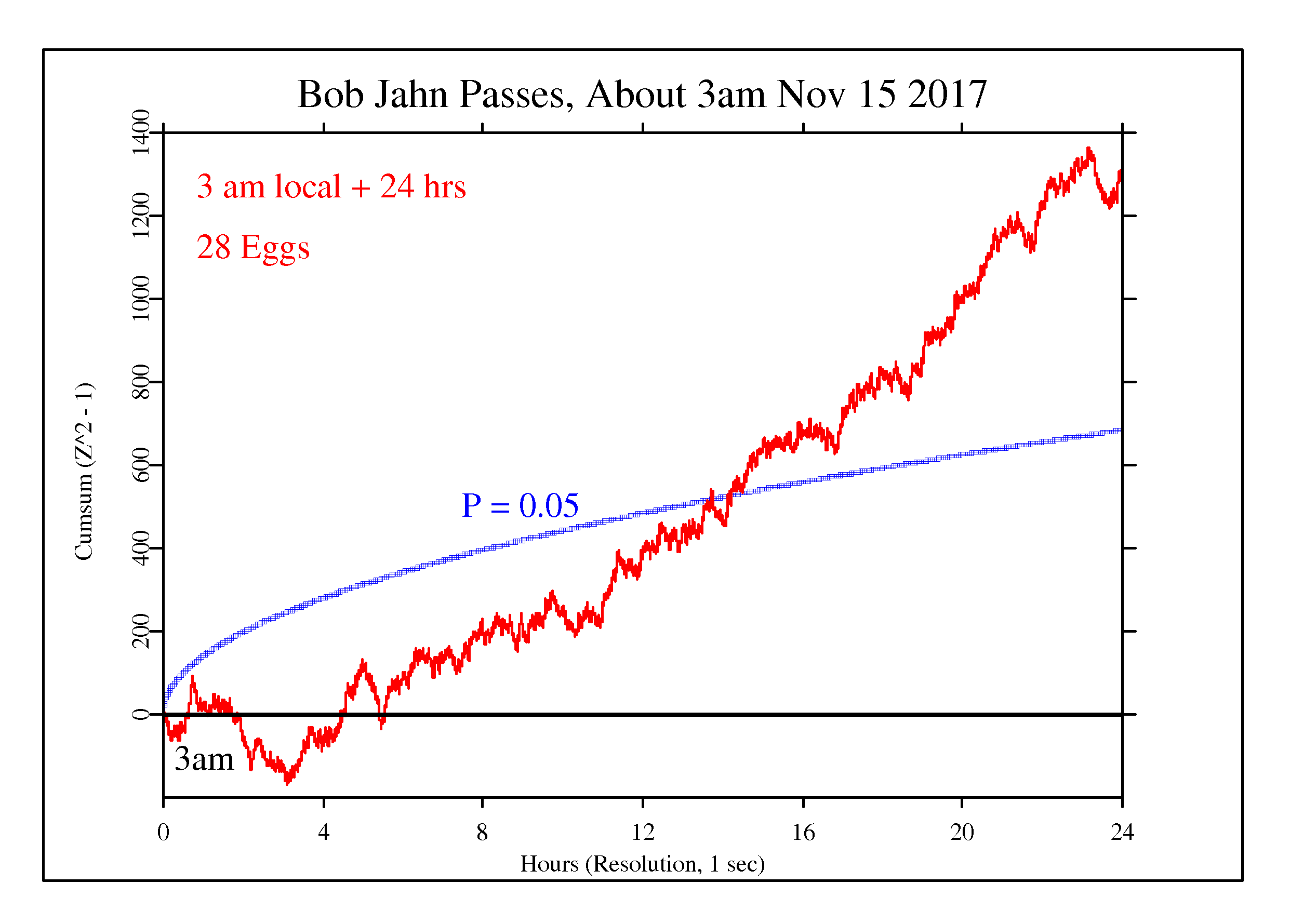Bob Jahn Passes, Nov 15 2017
Dean Robert G. Jahn created the Princeton Engineering Anomalies Research (PEAR) laboratory in 1979. It soon became one of the most productive psi research centers in the history of the field. Together with Brenda Dunne, who managed the lab, and a team of scientists from several fields, Bob broke new ground while also confirming and replicating research from many other sources. The PEAR lab had three major aspects, one assessing mind-machine interaction (MMI), one looking at remote viewing, most notably precognitive remote perception (PRP), and a third aspect focused on theory and modeling.
Bob died on Nov 15 2017 early in the morning at his home in Princeton, surrounded by family and loved ones. He had a remarkably influential role in psi research and the PEAR lab became a home for many and a beacon for far more people looking for inspiration and models that could help understand the extraordinary capacities of human consciousness. He was known around the world as a seminal figure in consciousness research. Among the several independent projects and research programs based on work of the PEAR group is the Global Consciousness Project. His passing was a profoundly meaningful moment for a great many people. Given these factors and the interconnections of PEAR and GCP, we decided to look at the data from the GCP network, using the standard analysis procedures applied for other major figures.
Specific Hypothesis and Results
Bob died at about 3:00 am on 15 November 2017, which corresponds to 0800 UTC. The GCP event was set for 24 hours beginning at that time. The outcome is a striking trend, shown in the image below, and the analytical result is Chisquare 87694 on 86400 df for p = 0.001 and Z = 3.096.
Interpretation
The following graph is a visual display of the statistical result. It shows the second-by-second accumulation of small deviations of the data from what’s expected. Our prediction is that deviations will tend to be positive, and if this is so, the jagged line will tend to go upward. If the endpoint is positive, this is evidence for the general hypothesis and adds to the bottom line. If the endpoint is outside the smooth curve showing 0.05 probability, the deviation is nominally significant. If the trend of the cumulative deviation is downward, this is evidence against the hypothesis, and is subtracted from the bottom line. For more detail on how to interpret the results, see The Science and related pages, as well as the standard caveat below.

Standard caveat
It is important to keep in mind that we have only a tiny statistical effect, so that it is always hard to distinguish signal from noise. This means that every success
might be largely driven by chance, and every null
might include a real signal overwhelmed by noise. In the long run, a real effect can be identified only by patiently accumulating replications of similar analyses.
